#BKOriginal: John Cortese and Golden Gate Fruit Market
Fillmore Real Estate presents #BKOriginal, a series about businesses and personalities that capture the true spirit of Brooklyn. Showcase your #BKOriginal photos for a chance to win prizes at BKOriginal.com. If you like your fruits and vegetables paired with a charming history lesson and Frank Sinatra on the stereo, you should make the trip to the Golden Gate Fruit Market in South…
Fillmore Real Estate presents #BKOriginal, a series about businesses and personalities that capture the true spirit of Brooklyn. Showcase your #BKOriginal photos for a chance to win prizes at BKOriginal.com.
If you like your fruits and vegetables paired with a charming history lesson and Frank Sinatra on the stereo, you should make the trip to the Golden Gate Fruit Market in South Brooklyn. The owner, John Cortese, is a treasure trove of Brooklyn stories.
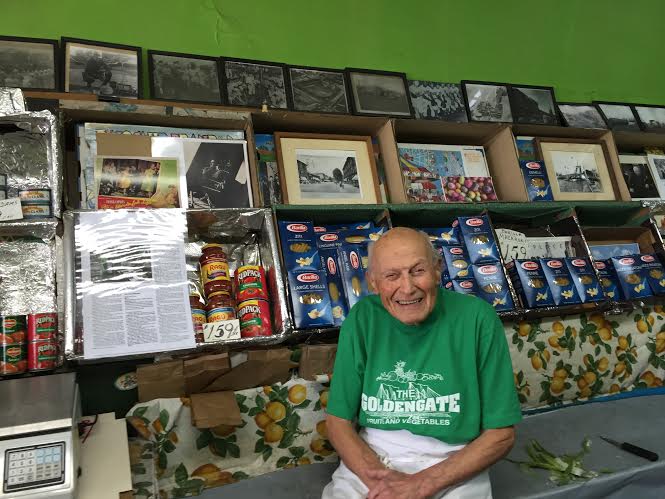 John Cortese at Golden Gate Fruit Market
John Cortese at Golden Gate Fruit Market
“In 1939, I was 14 years old, delivering orders for my father,” says Cortese. “Since then, the only changes are the scales and the cash register.”
On a crisp Saturday morning, Cortese hustles me around his fruit and vegetable market with an energy that belies his 91 years. He has his son (also named John) climb up on the shelves to show me a picture of Casey Stengel and the Yankees in the clubhouse. Joe DiMaggio is visible in the photo behind the pot-bellied stove, but we can’t find the late Yogi Berra.
As he shows me around, Cortese laments that some vegetables just aren’t popular anymore, like oyster plants (“Like a parsnip with a green top. The German people are familiar with it.”) He shows me a recent New York Times article about him and the shop. When I tell him he must be popular, he of course has an answer for that too.
“Well, don’t tell me you’re not popular, with that smile.”
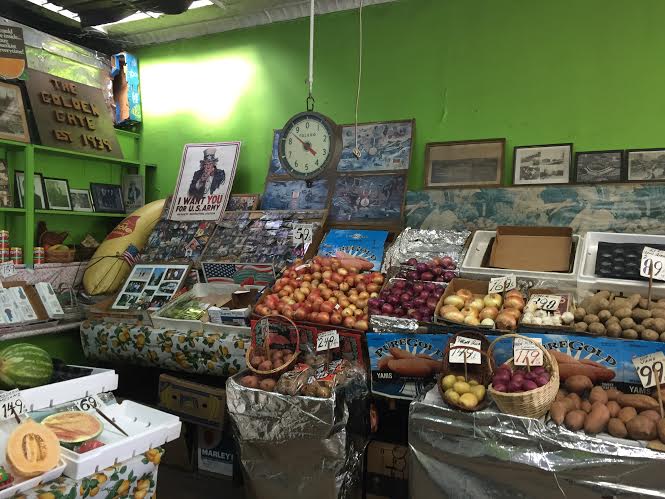 Onions, potatoes, and the original scale at Golden Gate
Onions, potatoes, and the original scale at Golden Gate
Mr. Cortese grew up in Park Slope and Prospect Heights. Apart from fighting in World War II, he has always stayed true to the family market.
“I’m happy,” he says. “I never considered this work. It’s like a hobby for me.”
He is characteristically modest about his involvement in the war, having been recruited to the army at 18 upon his high school graduation. When I express surprise that he sounded so casual about landing on Omaha Beach on D-Day, he says, “Everything was an experience, you know? Wherever they sent me, I went. I did the best I could, and I was fortunate to come back. God answered my prayers. Five, six times I said, ‘Please God, not now.’ We were lucky.”
He adds with a grin, “Some German pilots couldn’t shoot straight.”
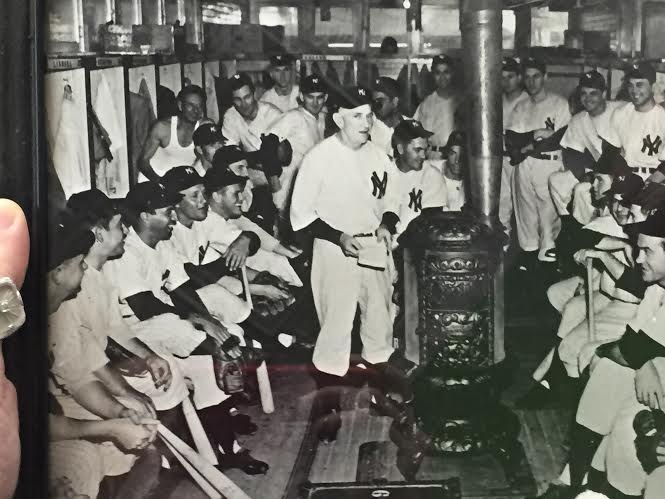 The Yankee clubhouse, complete with Joe Dimaggio
The Yankee clubhouse, complete with Joe Dimaggio
We talk about the changing neighborhood, the way people are getting away from cooking, and the vegetables that have had surprising comebacks.
“Years ago we had kale outside, because when it’s touched by frost it’s better, and it was 49 cents a pound. Now if you want kale, you’re paying almost two dollars a pound for it. The top seller is the bananas. People come in for the bananas day in, day out.”
He adds, “We don’t sell as much macaroni as we used to.”
Along with his son, who helps run the shop, he has two daughters. All three live nearby. Sadly, Mr. Cortese’s wife passed away in January, but he spoke of it with his typical wry humor.
“It gets lonely, but somehow I still feel her,” he says. “She’s around and she’s responsible for a lot of things. I’ll say, oh I can’t do this, I can’t do that, and I’ll hear, ‘You’re gonna do it!’ and I gotta listen.”
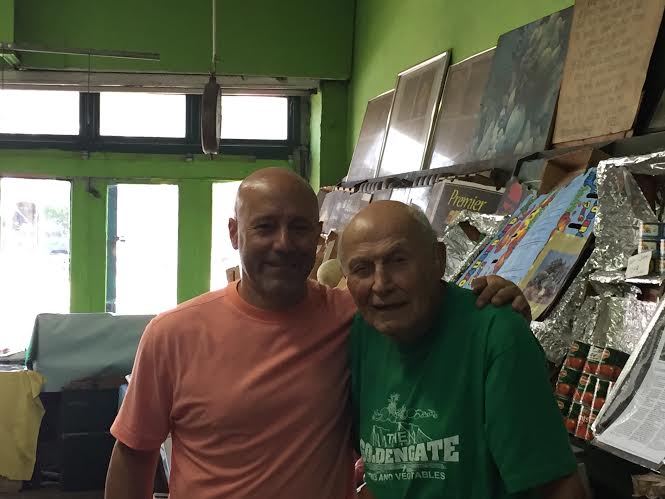 John Cortese the elder and younger
John Cortese the elder and younger
The market itself is half fruit and vegetables, half museum, with Mr. Cortese happy to act as tour guide. The walls are lined with historical photos of the neighborhood and years of family history. Be sure to take a look at the Fort Bragg training camp picture, taken just before he left for the war.
“See these wooden boxes down here?” he says, pointing to crates under the shelves. “Cantaloupes used to come in them. People say they’re worth money, but to me it’s just a stand for the vegetables. And it brings back memories. Years ago, everything came in bushels and boxes, no cardboard. Each orange was individually wrapped. Then when you had the empty box you would get a two by four and a pair of skates, get handles, some empty tomato cans for headlights, nail it together, and you have a scooter.”
This leads to an entertaining digression on other homemade toys.
“Growing up we couldn’t afford a football. We used to take some newspaper, tie it up with twine and that would be our football. When we played stickball in the street, if someone hit the ball over the roof, the game was over, but if it went down the sewer we had a chance. We knew we had a wire and could make a hook. You could get your ball back and sometimes some others down there too.”
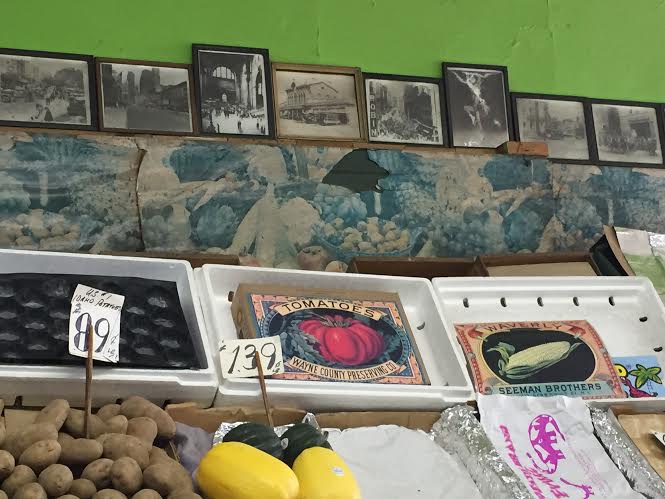 Fruits, vegetables, and history
Fruits, vegetables, and history
While I was there, a number of customers dropped in, including an old friend of his son’s, but business has tapered as the neighborhood has evolved.
“There’s no business anymore,” Mr. Cortese says with a sigh. “I do it because I have to keep busy. I can’t be idle. I enjoy it. I’ll stop when I can’t do it, but as long as I’m able to I’ll do it. There’s a lot of history in here. 75 years. There’s a lot of stories, and once in awhile they flash back.”
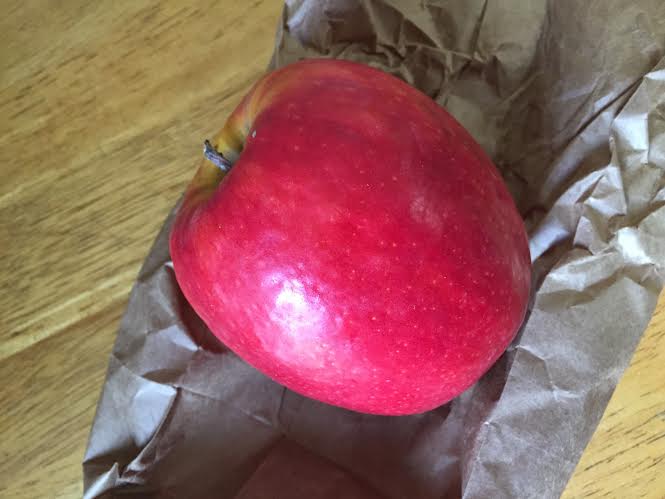 A delicious souvenir from John Cortese at Golden Gate
A delicious souvenir from John Cortese at Golden Gate
So if you’re looking for a pineapple, would like to hear the ring of a rotary phone, or might like to hear the story of a European village full of German tanks but no soldiers, please do pay Mr. Cortese a visit. If he likes your smile, he just might send you off with the most enormous Pink Lady apple you have ever seen.










Comments